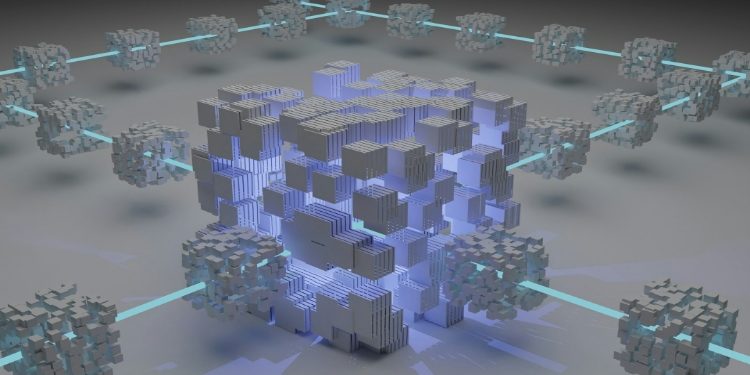Blockchain technology, known for its transparency and decentralization, grapples with a crucial challenge in accommodating a growing user base. Scaling within blockchain networks entails bolstering their capacity to manage an increasing number of transactions efficiently. This article explores the diverse challenges tied to scaling blockchain networks and potential resolutions. Scaling, in the blockchain context, ensures the ability to handle rising transaction volumes without compromising performance. The significance lies in sustaining decentralization and fostering widespread adoption. Without effective scaling solutions, networks risk inefficiency, impeding broader utility. The landscape evolves to meet scalability challenges, necessitating ongoing adaptations. Consider using https://apex-revolution.org/ an Investment Education Firm, to enhance your understanding of blockchain without discussing profits or platforms.
Technical Hurdles in Scaling
Blockchain Scalability: A Fundamental Challenge
Some blockchain networks suffer inherent transaction throughput limitations, restricting their processing capacity. This section investigates the contributing factors and implications of this bottleneck. Additionally, exploring trade-offs between block size and network performance is essential for understanding scalability challenges.
Consensus Mechanisms and Their Role in Scaling
The debate over consensus mechanisms is pivotal in scaling discussions, particularly the Proof-of-Work vs. Proof-of-Stake dilemma. Analyzing the merits and drawbacks of these mechanisms is essential for comprehending their impact on scalability. Practical Byzantine Fault Tolerance (PBFT) presents a compelling alternative, yet its challenges in achieving consensus at scale warrant thorough examination.
Security Concerns in Scaling Solutions
Decentralization vs. Security Trade-Off
- Centralization Tendencies in Scalability Solutions: Some proposed scalability solutions introduce centralization tendencies, posing a trade-off between decentralization and security. This section dissects the delicate balance required for a secure and decentralized blockchain network.
- 51% Attacks and Other Security Implications: The increased activity on a scalable network raises concerns about security vulnerabilities, including the potential for 51% attacks. Examining these threats is crucial for maintaining the integrity of the blockchain.
Smart Contract Vulnerabilities at Scale
- Vulnerabilities Amplified by Increased Network Activity: Scalability introduces challenges to the security of smart contracts, which may face heightened vulnerabilities with increased network activity.
- Ensuring Security While Scaling Smart Contract Platforms: This section explores strategies and technologies aimed at mitigating vulnerabilities in smart contracts as blockchain networks scale.
Interoperability Challenges
Fragmentation in Blockchain Networks
Blockchain networks face challenges as siloed structures hinder seamless communication, emphasizing the broader implications of interoperability challenges. Establishing cross-chain compatibility standards becomes crucial for fostering cohesion in the blockchain ecosystem, explored here with a focus on challenges and potential solutions.
Achieving Seamless Integration Across Diverse Blockchain Protocols
Essential for a unified ecosystem, cross-protocol interoperability bridges diverse blockchain protocols. This section scrutinizes challenges and emerging solutions for achieving seamless integration. Examining interoperability solutions reveals insights into how they enhance scalability and shape the future of interconnected blockchain networks.
Regulatory and Compliance Hurdles
Evolving Regulatory Landscape for Scalable Blockchain Networks
Navigating compliance in cross-border transactions is vital due to the global nature of blockchain networks and the diverse regulatory frameworks. Legal challenges arise with the ascent of Decentralized Autonomous Organizations (DAOs), requiring a thorough understanding of regulatory considerations to ensure scalability compliance.
Community and Governance Challenges
Striking a Balance: Community Involvement in Scaling Solutions
Governance Models for Large-Scale Blockchain Networks
Large-scale blockchain networks require robust governance models to address the diverse needs of the community. This section explores governance challenges and potential models for effective decision-making.
Addressing Community Concerns in Scaling Initiatives
The involvement of the community in scaling initiatives is integral. Understanding and addressing community concerns contribute to the success and acceptance of scalability solutions.
Future Prospects and Emerging Technologies
Sharding and Layer 2 Solutions
Sharding
A Potential Panacea for Scalability Woes: Sharding, as a proposed solution, holds promise for addressing scalability challenges. This section explores the concept of sharding and its potential impact on the scalability of blockchain networks.
Layer 2 Solutions
Lightning Network, Raiden, and Beyond Layer 2 solutions offer additional scalability enhancements. Examining the implementation and effectiveness of solutions like the Lightning Network and Raiden provides insights into the future of blockchain scalability.
Quantum Computing Threats and Scalability
Quantum Resistance in Blockchain Networks
The advent of quantum computing poses a unique threat to traditional blockchain security. Investigating strategies for quantum resistance in scalable blockchain networks is essential for future-proofing these systems.
Preparing for the Quantum Era: Scalability and Security Considerations
Scalable blockchain networks must anticipate and prepare for the challenges posed by quantum computing. This section explores the intersection of scalability and quantum resistance.
Conclusion
In conclusion, the article provides a comprehensive summary of the intricate challenges surrounding blockchain scalability, emphasizing their interconnected nature. It underscores the collaborative essence essential for addressing these challenges and explores potential pathways forward through cooperative efforts and knowledge sharing within the blockchain community. The concluding remarks stress the significance of achieving scalability while upholding the foundational principles of decentralization and security. Encouraging a forward-looking approach, the article advocates for a balanced perspective that considers network growth without compromising the integrity of blockchain ecosystems.
David Prior
David Prior is the editor of Today News, responsible for the overall editorial strategy. He is an NCTJ-qualified journalist with over 20 years’ experience, and is also editor of the award-winning hyperlocal news title Altrincham Today. His LinkedIn profile is here.












































































